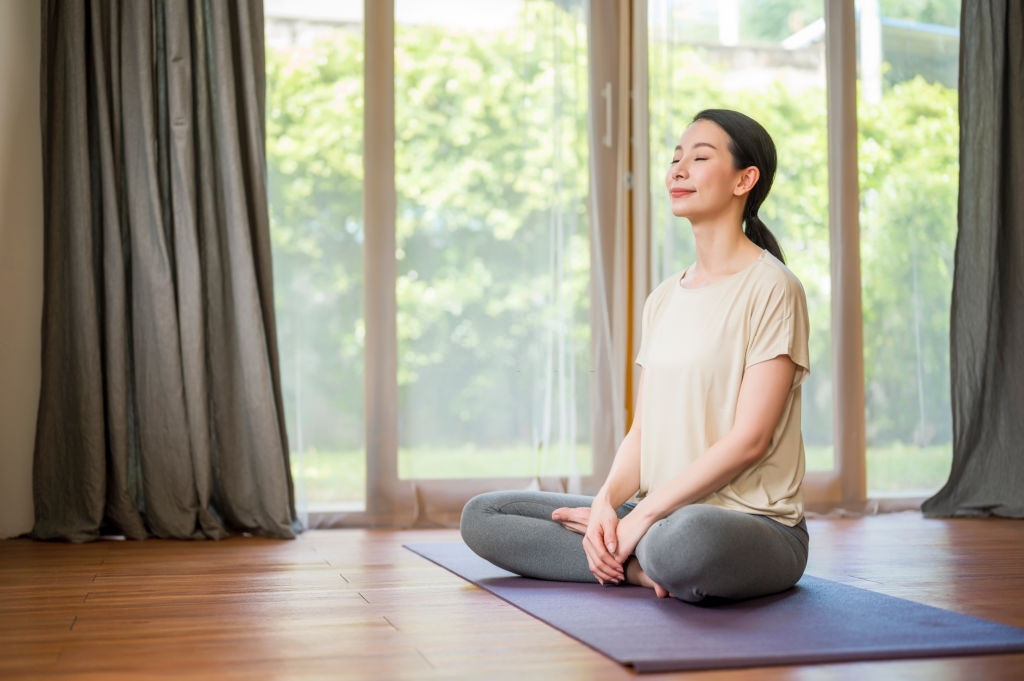For years, breathwork has been used not only as a way to energize, relax, and destress but also to help with the various healing processes of the body. The medical community is starting to embrace breathwork more and more, because there is evidence that breathwork can be used as a tool for recovery, especially for issues such as anxiety, overwhelm, and stress. Not sure how this works? Read our article on breathing to heal to know how it works.
Breathwork has been recommended by doctors when it comes to illnesses like fibromyalgia and arthritis because breathing exercises can reduce pain and the anxiety caused by pain. Doctors also recommend breathwork for patients who suffer from asthma, because breathwork can increase the amount of oxygen intake into the body and promote the recovery of the lungs. Modern medicine has also begun using breathwork for different forms of anxiety, depression, and even PTSD.
Breathing To Heal: Relaxation, Health, and Breathwork

Superficially, breathing exercises may look like you’re just changing up the way you inhale and exhale, and that it is more placebo than reality. However, this could not be further from the truth. Let’s examine different techniques with proven results.
First, one of the major effects of breathwork on a person is to enhance perceived well-being. One form of breathwork, known as re-birthing, is often used as a tool by psychologists to help a person get over the trauma and clear out negative emotions. People who have experienced re-birthing breathwork describe the process as freeing and feel that they are lighter and have let go of emotional baggage that was weighing them down. Overall, it results in having a better mood and outlook and helps people feel renewed and relieved from the past.
The journey and experience of this process are tough and often vary from person to person. Though there are some detractors of re-birthing, the results speak for themselves as many have been able to overcome challenges and recover from problems they saw as incurable.
Besides the psychological effects, breathwork has seen wide use by physiotherapists, personal trainers, and athletes. Different breathing techniques can be used to ready the body for exertion. When used in conjunction with physical warm-up exercises, breathwork, and breathing techniques can be used not only to prepare for action but also to cool down and relax after a hard workout. Breathwork is also used in physiotherapy due to how proper breathing techniques can affect a person’s perception of pain and also because it facilitates the release of endorphins which make people feel great.
Overall, breathwork is not just to find your center of balance, calm your nerves, or help with meditation; it is also there to help you with your workouts and physical conditions.
How Does Breathing Influence Health and Healing?

Doctors know that mindset affects healing. Many doctors and researchers have discussed the impact of having a positive mindset and good emotional health on a person’s physical health. Some researchers say that more optimistic people tend to live longer and have better heart health.
The effect of breathwork on health is immense. On the physical side, breathwork has been used to help with things like chronic pain, childbirth (the Lamaze method), and lung diseases. Different breathing techniques can be used to promote healing within the body. One such thing is pain control and reduction. Physiotherapists often make use of breathwork and breathing techniques to teach patients to deal with and control their pain.
Therapists recommend doing breathing exercises not just because it’ll reduce the sensation of pain, but also because it will promote and improve the body’s healing capabilities. When the proper breathing techniques are used, they flood the body with oxygen and start the body’s self-healing and regeneration process.
Breathing To Heal:

The concept of breathing to heal is not new, as it has been used for many years. However, this as a concept is relatively new when speaking in medical terms. There has been some research into how breathing techniques and breathwork can help to relieve pain and revitalize a person. It’s recommended for people who suffer from CFS, fibromyalgia, arthritis, and several other chronic illnesses.
Let’s go over a breathing technique that can not only help you relieve pain but also clear your mind and even help you to improve your body’s healing ability.
Abdominal Breathing

This breathing technique is one of the most widely used techniques and is often recommended for beginners. With this technique, you oxygenate your blood. This sudden rush of oxygen into your bloodstream sends a message to your organs to work more efficiently and thereby increases the potential of your body’s healing system.
These are the steps to perform abdominal breathing.
- Seated, whether on the floor or in a chair, place one hand on your chest and the other on your abdomen.
- Take in a deep breath through the nose. During this, make sure the hand on your abdomen rises higher than your chest. You will feel the hand on your belly rise as the belly fills with air like a balloon.
- On the exhale, feel the belly lower as the air is released.
- Start again by taking in a deep breath through your nose and count to 8 or 9 while inhaling.
- Exhale faster than you inhaled, for a count of 6 or 7, and contract your abdominal muscles to fully release the air.
This should be practiced once or twice during your day. A wellness break within the chaos of a workday will improve your overall energy and mood.
Conclusion
The idea of breathing to heal isn’t new. However, this concept is still being explored and newly embraced by modern medicine. With promising research being conducted on the effects of breathwork on overall health and well-being, it is no wonder that breathwork is increasingly being used for both physical and mental healing.
You can also read: Breathwork And Yoga: All You Need To Know